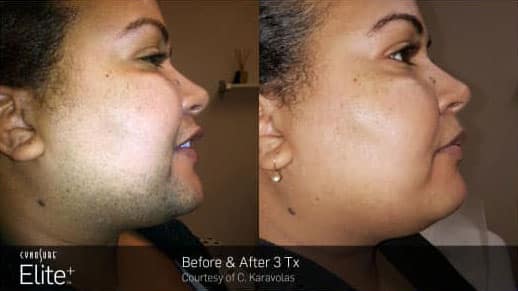When contemplating laser hair removal for the bikini area, a flurry of questions arises. One of the foremost queries is, “How many laser hair removal sessions do I need?” The answer is not universally fixed; it oscillates based on several individual factors, including hair type, skin tone, and the specific results desired. Let’s delve into the details to unravel this perplexing topic.
To start, let’s define what laser hair removal entails. This cosmetic procedure employs concentrated beams of light to target hair follicles, inhibiting future hair growth. While it is not a permanent solution, it does significantly reduce hair density, leading to smoother skin and a more polished appearance. Understanding the process can help demystify the recommended number of sessions.
Experts generally recommend attending four to six sessions for effective results in the bikini region. This guideline stems from various studies and expert opinions, which suggest that an interval of four to six weeks between treatments maximizes effectiveness while allowing the skin to heal. However, some individuals may require more sessions, while others may see results in fewer.
Several factors contribute to how many sessions one might need:
- Hair Growth Cycle: Hair exists in three phases: anagen (growth), catagen (transition), and telogen (resting). Laser hair removal is most effective during the anagen phase, when hair is actively growing. Because follicles are in different phases at any given time, multiple sessions are necessary to target them adequately.
- Hair Color and Thickness: The contrast between skin tone and hair color can play a critical role. Laser systems work best with darker hair against lighter skin. Fine blonde or red hair may not respond as readily, necessitating additional treatments for similar results.
- Skin Type: The Fitzpatrick scale classifies skin types based on their response to UV light. Individuals with lighter skin typically experience better results and require fewer sessions. Conversely, those with darker skin may need more treatments due to a higher variance in hair follicle depth and pigment.
- Desired Outcome: Some may choose to maintain a completely hair-free bikini line, while others might only desire a reduction in hair density. Clarifying these goals with your technician will influence the number of sessions required.
Now, let’s explore the typical timeline for a bikini laser hair removal journey. Initially, the practitioner will conduct a consultation, analyzing your hair and skin types, and discussing your preferred outcomes. From there, you’ll likely set a series of appointments spaced a month apart.
When those sessions commence, expect a combination of anticipation and mild discomfort. Modern lasers incorporate cooling mechanisms and topical anesthetics to minimize discomfort, but sensations can still vary. Sessions usually last 20 to 30 minutes, making them relatively quick and convenient.
After each session, it is important to follow a diligent aftercare routine. Your skin, having been exposed to concentrated light, will need time to recuperate. Applying soothing creams, avoiding sun exposure, and steering clear of hot baths or intense workouts for a day or two are crucial steps to enhance healing.
After completing the recommended series of treatments, patients typically notice a significant reduction in hair density, often up to 70-90%. However, some may opt for maintenance sessions, which can occur every six to twelve months, depending on individual hair growth patterns.
Now, let’s address common misconceptions surrounding laser hair removal. One prevalent myth is that it is an entirely painless procedure. While many find it manageable, sensations akin to rubber bands snapping against the skin can occur. It is also a misconception that results are instantaneous. Laser hair removal yields progressive results; hair often falls out over several weeks post-treatment.
Furthermore, some people believe that laser hair removal is only applicable to certain body areas. In reality, this technology can be safely utilized on nearly any region, excluding the surrounding eye area. This versatility allows individuals to choose a treatment path based on their unique grooming preferences.
Another important consideration is the age factor. Younger clients, particularly those aged 18 to 35, often pursue laser hair removal as a long-term solution to personal grooming. The suitability of this method is hardly defined by age, as many factors—such as hormone fluctuations and personal habits—play significant roles in hair growth. Therefore, consulting with a qualified technician is crucial for informed decisions.
In summary, the query surrounding the number of sessions required for bikini laser hair removal is multifaceted. Typically, the consensus leans towards four to six sessions, influenced by individual hair and skin characteristics, as well as personal aspirations. With appropriate planning and realistic expectations, many achieve satisfying outcomes that align with their grooming goals.
For those who brave the experience, laser hair removal presents an opportunity for longer-lasting freedom from unwanted hair. Choosing a seasoned practitioner paired with tailored advice enhances the likelihood of desirable results. So, dive into this modern approach with a blend of curiosity and precaution—smooth skin awaits!

